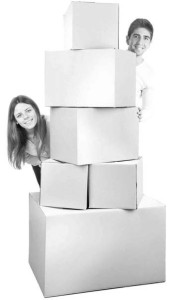 Moving is a big project with so many things to do that it is easy to get overwhelmed if you are not well organized. Luckily, I specialize in guiding my clients through the process of selecting what to keep and what not to keep. Here are a few suggestions for planning, de-cluttering and clearing a space in preparation for a smooth transition.
Moving is a big project with so many things to do that it is easy to get overwhelmed if you are not well organized. Luckily, I specialize in guiding my clients through the process of selecting what to keep and what not to keep. Here are a few suggestions for planning, de-cluttering and clearing a space in preparation for a smooth transition.
Plan:
One of the main factors in being ready of a move is the amount of time you put into preparing. As the time gets closer for you to vacate the space, use a calendar to schedule in the daily or weekly appointments that you will need to spend getting ready. Once the move is imminent, mark the bigger items such as furniture and art with “keep”, “sell” or “giveaway” signs or colored dots so that you have time to look over your choices and make changes if needed. If you know where you are moving, create a floor plan of your new home. Consider each piece of furniture you have and create a diagram of where it will go. If you are moving but the new home is not decided, only choose what you love and say goodbye to the rest.
De-clutter:
If you know that you are moving at any point in the next year, I suggest you start the de-cluttering process now and commit to making the important decisions about which possessions you value most. Use the move as a way to have a fresh start at being organized in your new home. Remember that the less stuff you own, the less you have to take care of. A lot of times shedding your excess possessions is hard at first but helps you feel lighter and freer in the end. Because you are looking to remove items you do not want, you can start anywhere.
Some ideas are the utility/wash room, the linen closet, the pantry, the shed, or underneath the bathroom sink. My favorite method for purging is to separate things into categories so you can see the total amount of what you own and decide from there. For example, if you are looking at picture frames gather all of the ones you have in various areas of the house and then look at the entire collection together to decide what to keep. Inspect each item and ask yourself a series of questions: Do you really use or love it? How many do you need?Where will it go in the new place? Is it replaceable? What is the worst scenario if you let it go? Donna Smallin, bestselling author of Organizing Plain and Simple, suggests that you consider whether an item is worth the time and expense it will take to pack, move, and unpack it before agreeing to move it. If you have difficulty making decisions invite a friend who can be there to talk you through it or a Professional Organizer who is trained to help.
Clear Out:
The cast offs should be bagged or boxed to be given away, donated to charity, sold or trashed. For giveaways to a specific person, such as a friend, contact them to ask if they are interested in picking it up by an agreed upon date. Donate the items after the deadline.
The easiest method for purging is to make a bulk donation to a charitable organization that can come with a truck and take everything away. Just confirm that they accept the items you are hoping to donate and remember to get a receipt. If time allows, try selling items on consignment, online, or at an estate/moving/yard sale, depending on the value of the items. A great way to sell large furniture or appliances is to ask the new buyer or neighbors if they are interested. If you have an excessive amount of trash and need to dispose of it quickly call a bulk pick-up service that can take virtually anything for a fee.
When a situation arises where you decide to pay for public storage set a firm deadline for when you will empty the space. I suggest that you seriously consider the monetary value of the items you are paying to store to decide if you are not better off letting them go now. Another idea is to try and negotiate with a friend or family member who might accept less money for temporary storage on their own property.
The initial stage of preparation for amove can take a lot of time and effort, but once you are done you can safely say that everything you move to your new home should to be there and will help you feel comfortable in your new space. Please see next month’s article for moving stage two: packing and unpacking.
